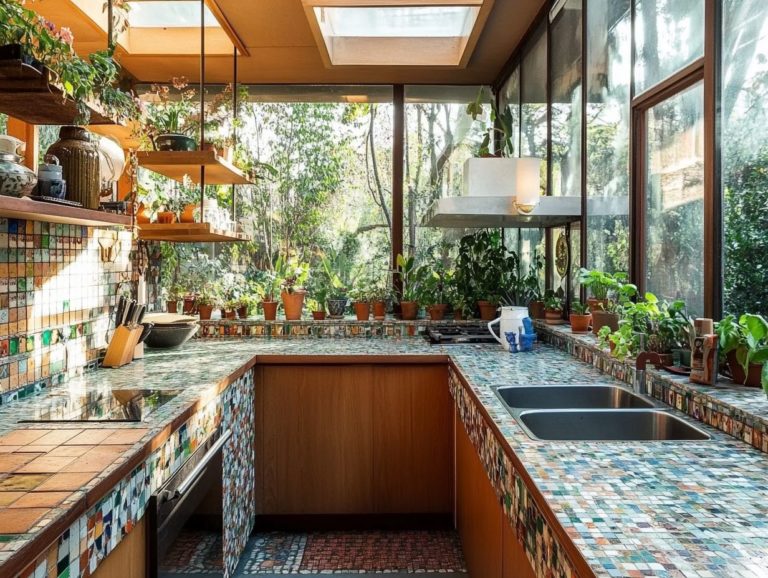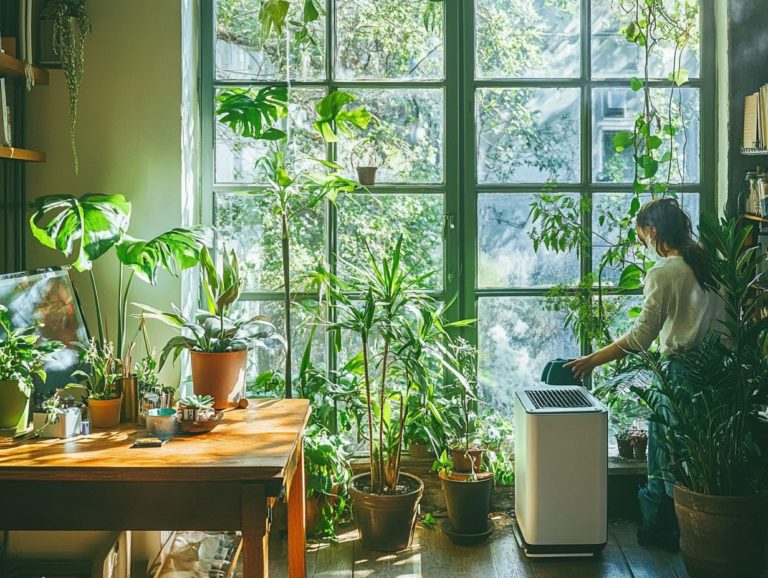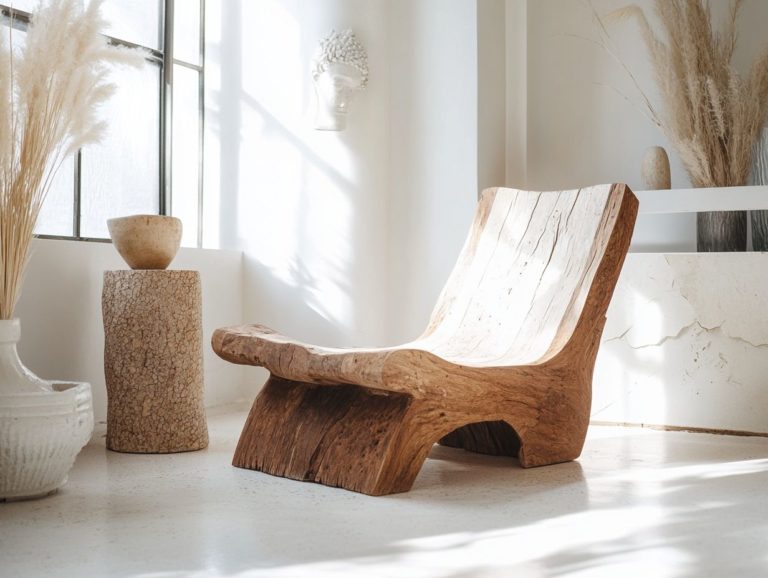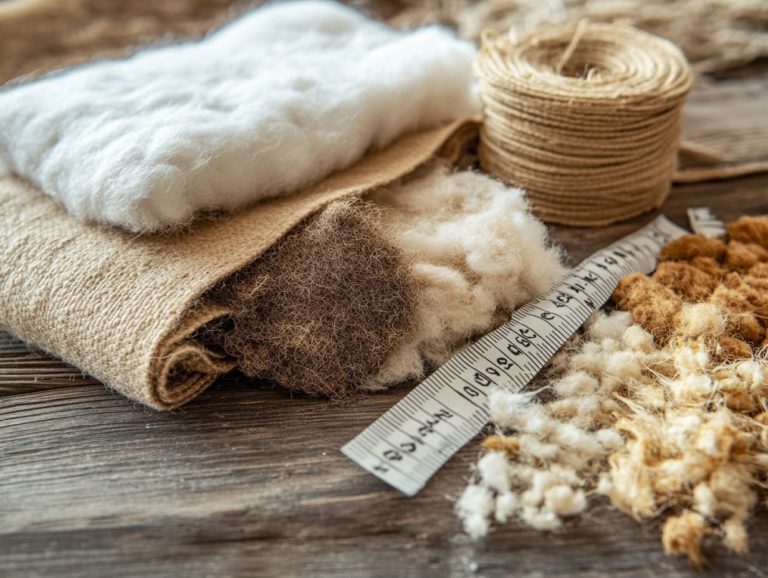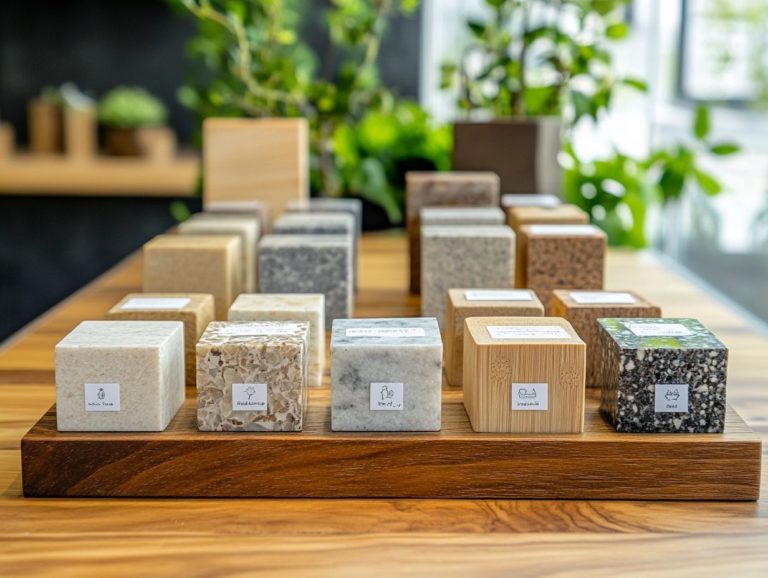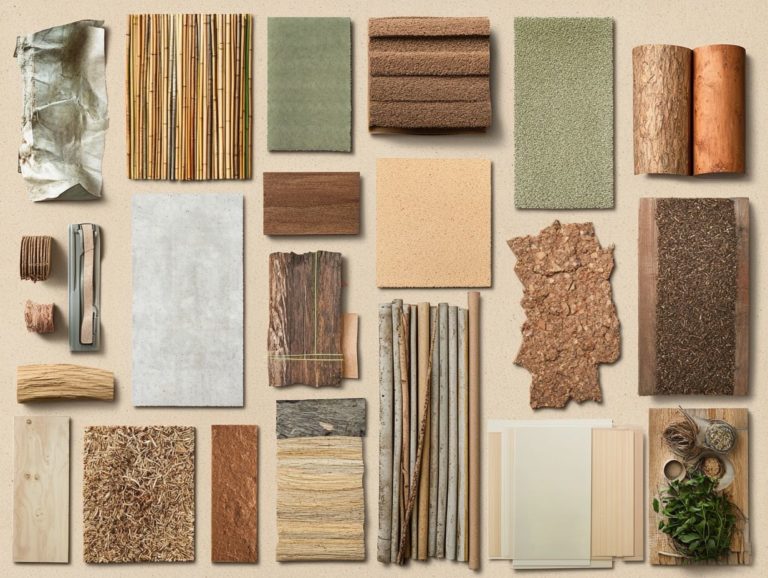Green Roofs: Advantages for Urban Living
Green roofs are not just a fleeting trend; they are reshaping urban landscapes into vibrant, sustainable environments.
This article delves into the essence of green roofs, exploring the types available and their remarkable benefits from enhancing air quality to managing stormwater runoff.
Green roofs play a crucial role in reducing the urban heat island effect, contributing to a more comfortable city experience.
You ll uncover essential design, installation, and maintenance tips to ensure your green roof thrives for the long haul. Discover how green roofs can revolutionize urban living!
Contents
- Key Takeaways:
- What are Green Roofs?
- Benefits of Green Roofs
- How Green Roofs Improve Urban Living
- Design and Installation of Green Roofs
- Maintaining Green Roofs
- Case Studies of Successful Green Roofs
- Future of Green Roofs
- Frequently Asked Questions
- What are green roofs and what are their advantages for urban living?
- What are the environmental benefits of green roofs for urban living?
- How do green roofs benefit the building occupants?
- What are the economic benefits of green roofs for urban living?
- What types of buildings are suitable for green roofs?
- How can I get started with implementing a green roof for my building?
Key Takeaways:
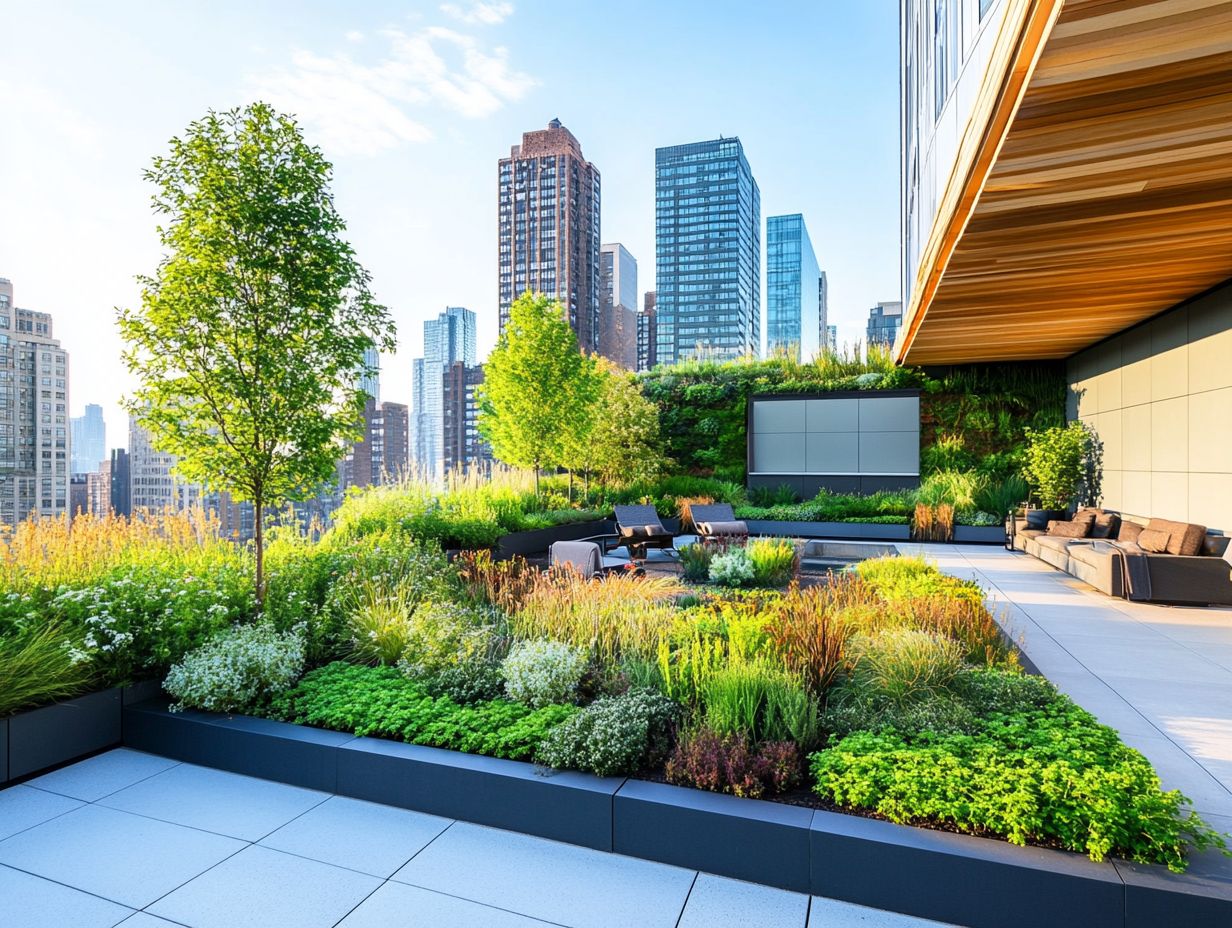
Green roofs provide numerous benefits for both the environment and economy, making them a sustainable solution for urban living. They reduce the urban heat island effect, improve air quality, and manage stormwater runoff, playing a crucial role in creating healthier and more livable cities. Proper design, installation, and maintenance are key to ensuring the long-term sustainability and effectiveness of green roofs in urban areas.
What are Green Roofs?
Green roofs, often referred to as living roofs, are an exciting advancement in roofing systems that integrate vegetation and soil over waterproofing membranes.
This approach brings many benefits for both building structures and urban landscapes. These systems come in various designs: extensive green roofs require minimal upkeep, while intensive green roofs support a diverse array of plant life and even community gardens.
This diversity enhances the environment, boosts urban biodiversity, and provides essential habitats.
Benefits of Green Roofs
Green roofs offer a compelling suite of environmental and economic benefits, making them invaluable for both public and private building projects.
They enhance thermal performance and significantly improve energy efficiency. These rooftops foster biodiversity by providing habitats for various species.
On the economic front, green roofs lead to reduced energy costs and can even elevate property values, offering substantial returns on investment.
How Green Roofs Improve Urban Living
Green roofs are essential for elevating urban living conditions, tackling challenges like the urban heat island effect, air quality concerns, and stormwater management.
Incorporating this green infrastructure helps mitigate the heat from urban landscapes, enhances air quality through pollutant filtration, and manages stormwater runoff.
This reduces the risk of flooding and contributes to the revitalization of local ecosystems.
Reducing Urban Heat Island Effect
Implementing green roofs significantly reduces the urban heat island effect, where cities become warmer than surrounding rural areas due to human activities and infrastructure.
Green roofs absorb sunlight and cool the environment through the process of plants releasing moisture into the air, improving thermal performance and energy efficiency.
This natural process regulates temperatures and lowers the demand for air conditioning, reducing energy consumption across buildings.
Green roofs also create habitats for biodiversity, which can improve urban air quality by filtering pollutants. With diverse plant species, these roofs retain rainwater, minimizing runoff that often leads to flooding.
As a result, cities can become more resilient to climate fluctuations, showcasing how green roofs are not just aesthetic upgrades but transformative solutions for urban sustainability.
Improving Air Quality
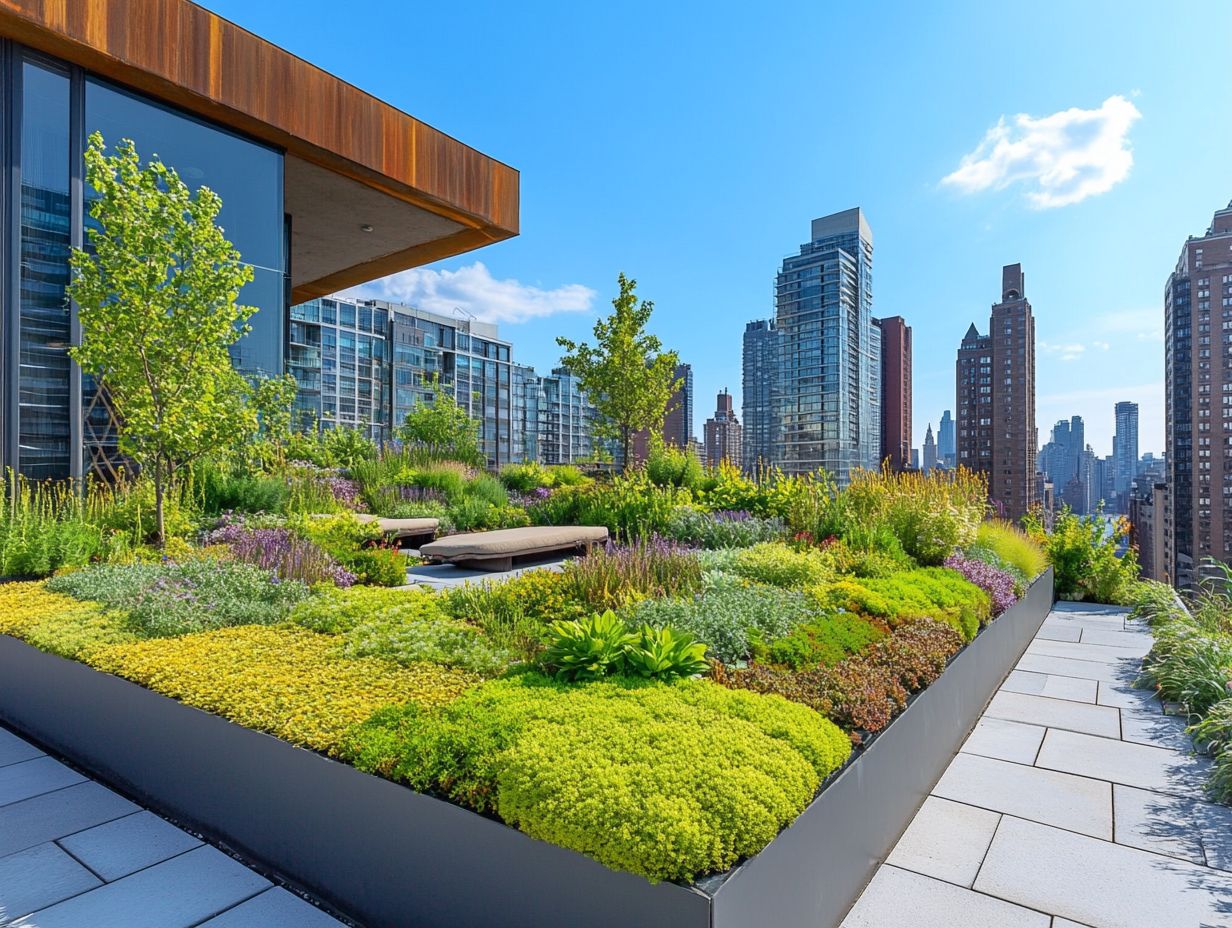
Green roofs are essential for enhancing air quality in urban settings. They expertly filter pollutants and capture airborne particles. Their plants absorb CO2 and other harmful pollutants, resulting in cleaner air and significant environmental benefits for city residents.
These green sanctuaries tackle pollutants like nitrogen oxides and particulate matter, which can worsen respiratory conditions and other health issues. By functioning as natural filters, green roofs bolster a healthier urban ecosystem, promoting individual well-being while nurturing a sense of community.
As cities around the globe grapple with escalating air quality concerns, integrating green roofs into urban planning becomes vital. This strategy not only enriches the environment but also elevates the quality of life for residents, underscoring the significance of sustainable architectural practices.
Managing Stormwater Runoff
Actively managing stormwater runoff is crucial for our cities’ future. Effective stormwater management emerges as a pivotal advantage of green roofs, which incorporate systems that manage rainwater.
By capturing and slowing down water runoff, green roofs mitigate the risks of flooding and erosion. They also nurture healthier community gardens and local ecosystems.
These systems are crafted to manage excess water efficiently, allowing it to infiltrate and nourish the plant life, promoting biodiversity in urban environments.
Green roofs significantly alleviate the strain on traditional stormwater infrastructure, reducing the frequency and severity of combined sewer overflows. This innovative solution bolsters the resilience of urban infrastructures and enhances the well-being of local wildlife. It creates habitats that support diverse species, fostering a balance in the ecosystem that urban areas often lack.
Design and Installation of Green Roofs
When designing and installing green roofs, it’s essential to consider various factors, including the selection of waterproofing membranes, drainage systems, and appropriate plant species.
This meticulous planning ensures successful plant growth and the long-term viability of the roof. By addressing these elements with care, you can create efficient green roof systems that thrive in urban environments.
Key Considerations and Techniques
When designing and installing green roofs, several key considerations are important.
Effective drainage systems and durable waterproofing membranes protect the building from moisture damage. These elements are critical for the longevity and sustainability of your green roof system.
Additionally, the selection of planting medium significantly influences the vegetation’s overall health. Choosing the right plant species that thrive in your local climate and roof conditions enhances biodiversity while reducing maintenance efforts.
It’s also crucial to assess the structural integrity of the roof to ensure it can bear the additional weight of soil and plants. Regular maintenance, including thoughtful irrigation strategies and pest management, maximizes the system’s efficiency and addresses any potential issues that could compromise the effectiveness of the green roof.
Maintaining Green Roofs
Maintaining green roofs is crucial for ensuring their longevity, sustainability, and ongoing plant growth. This endeavor demands regular care and attention to their specific requirements.
To keep your green roof thriving, focus on best practices such as:
- Monitoring plant health: Regular checks ensure plants are thriving and identify potential issues early.
- Managing irrigation effectively: Adequate water supply is vital for plant growth and overall health.
- Conducting routine inspections: Identify and address any potential issues that may arise, ensuring the roof’s long-term functionality.
Best Practices for Long-Term Sustainability
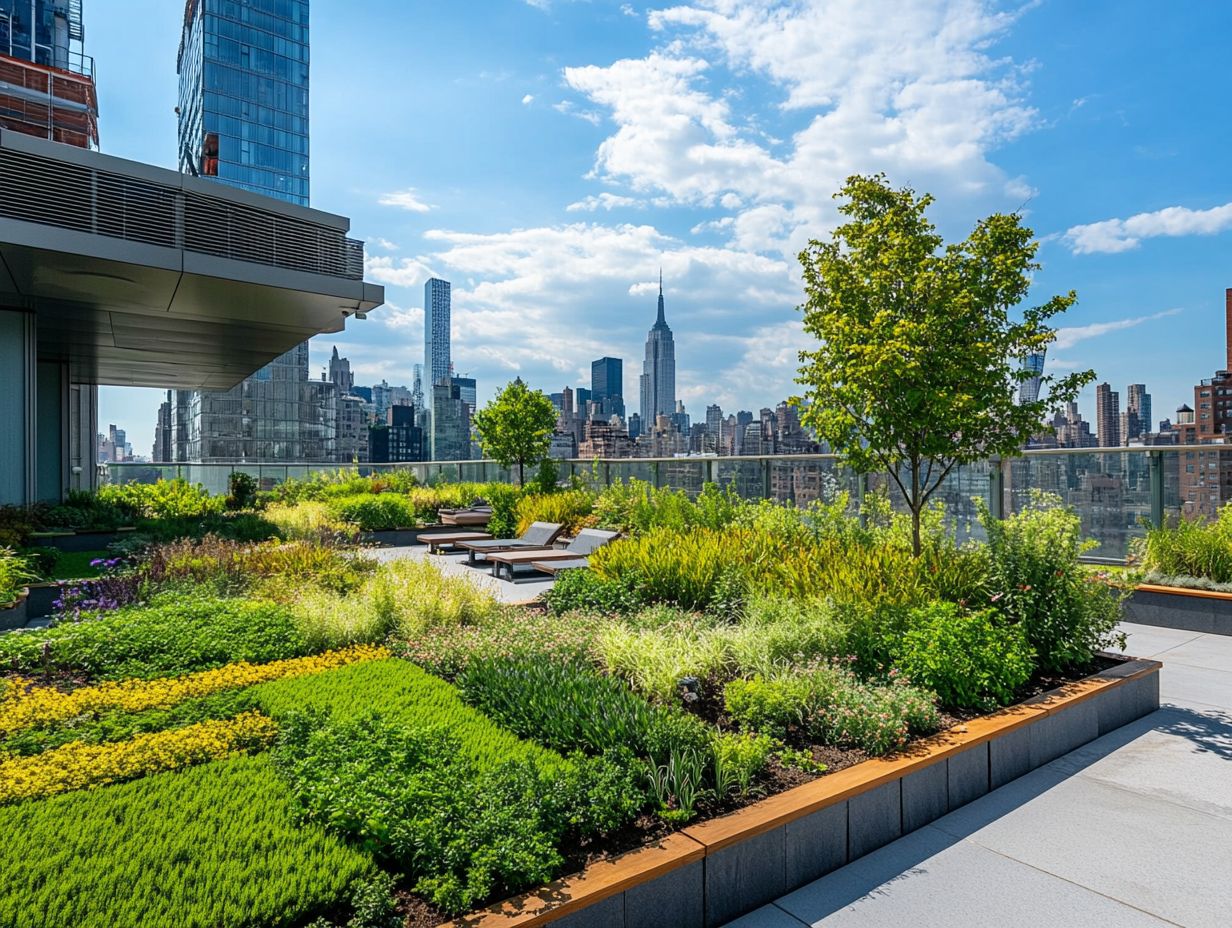
To ensure the long-term sustainability of your green roof, it is essential to adhere to best practices that prioritize plant health. Regular assessments of your green roof help you make vital adjustments that foster optimal plant growth.
Good water control is crucial during dry spells. Establishing a scheduled watering routine and monitoring soil moisture levels prevent drought stress. Periodic inspections for pests or diseases are critical; catching issues early can thwart larger infestations that might jeopardize the overall health of your roof’s vegetation.
Utilizing organic fertilizers enhances soil quality without introducing harmful chemicals, creating an environment where plants can thrive.
Cleaning drains and gutters helps maintain proper drainage, significantly reducing the risk of water pooling, which can cause extensive damage. These practices extend the life of your green roof, bolster urban biodiversity, and improve air quality in your surroundings.
Case Studies of Successful Green Roofs
Case studies of successful green roofs reveal their practical applications and benefits across diverse urban environments. They demonstrate effectiveness in combating the urban heat island effect while enhancing local biodiversity.
Many standout projects incorporate community gardens, which beautify the area, promote social cohesion, and stimulate local job creation.
Future of Green Roofs
The future of green roofs is bright and full of exciting possibilities as urban infrastructure increasingly leans into sustainability. With ongoing advancements in technology and design, green roofs are poised to become essential in enriching urban ecosystems, enhancing air quality, and tackling climate challenges head-on.
Frequently Asked Questions
What are green roofs and what are their advantages for urban living?
Green roofs are vegetative rooftop systems that provide a layer of plants and growing medium over traditional roofing materials. They benefit urban living by:
- Reducing the urban heat island effect
- Improving air quality
- Providing additional green space in densely populated areas
What are the environmental benefits of green roofs for urban living?
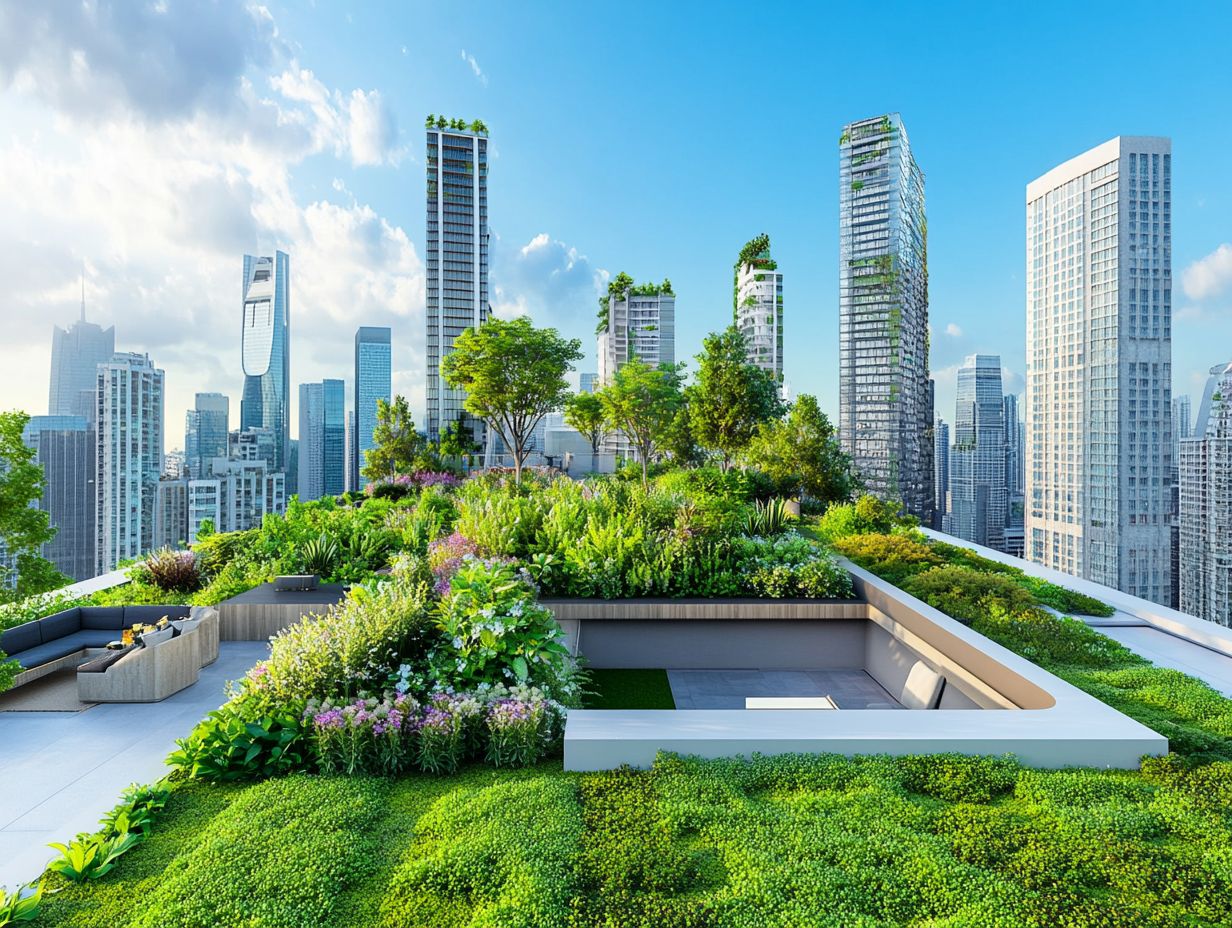
Green roofs can help mitigate the effects of climate change by:
- Reducing energy consumption
- Improving stormwater management
- Promoting biodiversity
- Reducing air and water pollution in urban areas
How do green roofs benefit the building occupants?
Green roofs can improve overall air quality and create a more comfortable living environment by:
- Reducing noise pollution
- Regulating indoor temperatures
- Increasing natural light
- Providing a space for relaxation and recreation
What are the economic benefits of green roofs for urban living?
Green roofs can help reduce energy costs by:
- Providing insulation
- Reducing the need for air conditioning
- Having a longer lifespan than traditional roofing materials, thus lowering maintenance and replacement costs
- Increasing property value and attracting tenants or buyers for commercial buildings
What types of buildings are suitable for green roofs?
Green roofs can be installed on any building that can support the weight and requires a flat or slightly sloped roof, including:
- Residential buildings
- Commercial buildings
- Industrial buildings
However, it is important to consult with a professional to determine the feasibility and suitability of a green roof for a specific building.
How can I get started with implementing a green roof for my building?
The first step is to consult with a green roof professional who can assess your building and provide recommendations. They will provide a cost estimate and guide you through the design and installation process. It is also important to check with your local government for regulations or incentives for green roofs in your area.
Start exploring options for your green roof today!

